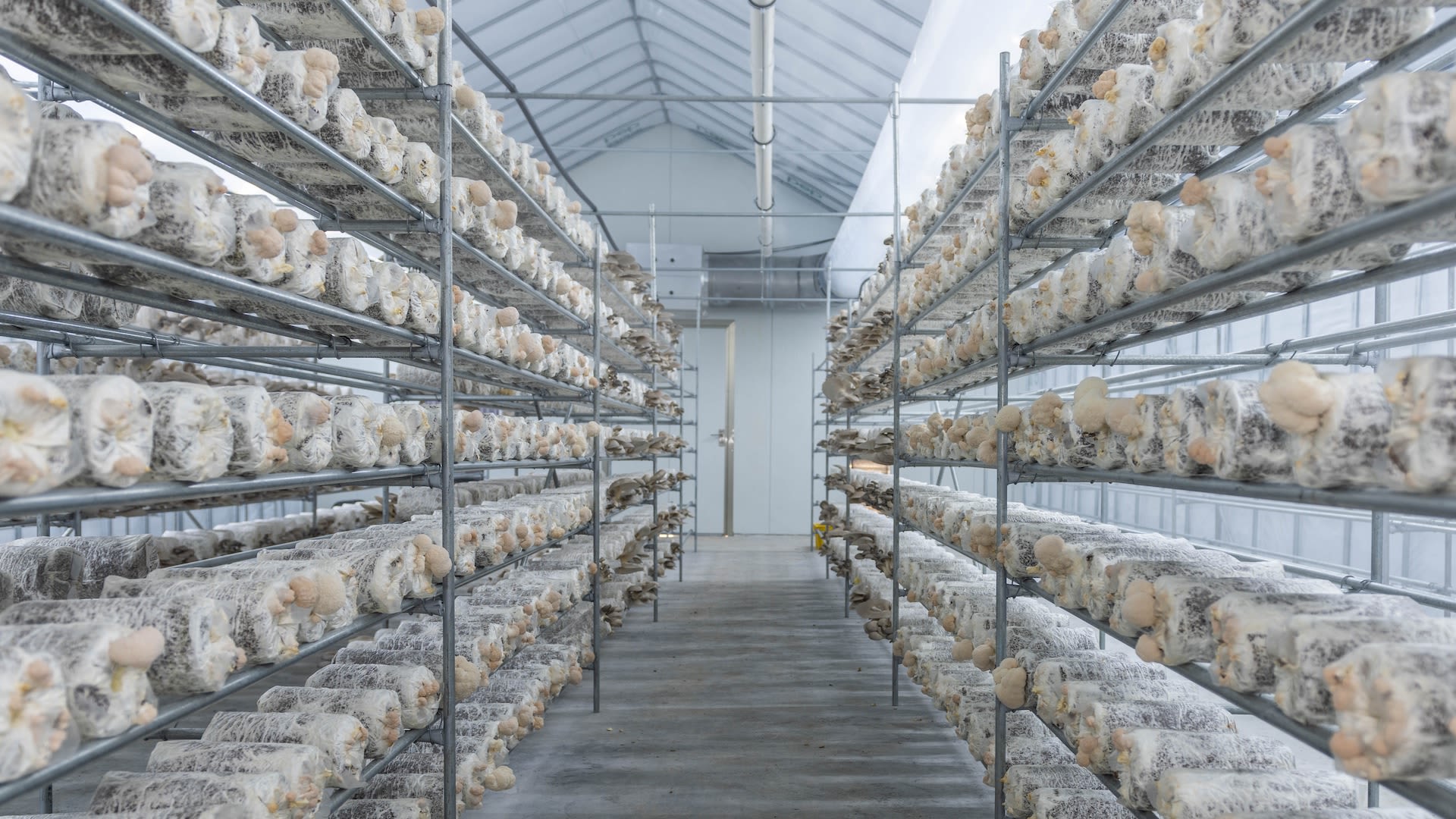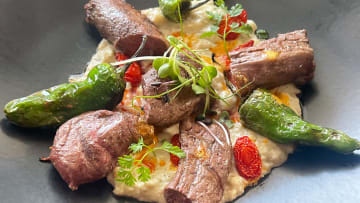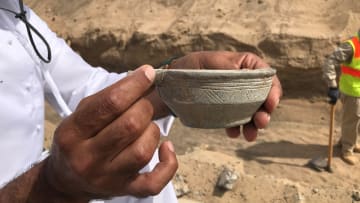دبي، الإمارات العربية المتحدة (CNN) -- ينبت الفطر في أرض الغابات المظلمة والرطبة، أو يتفتّح على أغصان الأشجار المتساقطة.. بيد أنّ شركة "بيلو فارم" الناشئة في أبوظبي تمكّنت من إنتاج أنواع خاصة من نبات الفطر مثل "المحار"، و"محار الملك"، و"شيتاكيه"، و"عرف الأسد" وسط الصحراء.
وفي لقاء مع CNN، قالت برونتي وير، المديرة الإدارية لشركة "بيلو فارم"، إنّ المزرعة الداخلية تبعد نحو 45 دقيقة بالسيارة عن وسط مدينة أبوظبي، وهي الأولى في المنطقة لزراعة وبيع الفطر الفاخر.
وأضافت أنّ منتجات "بيلو فارم" أفضل من الفطر المستورد، لأنّ «الفطر يتلف بسهولة شديدة، ويفقد نضارته بسرعة".
هل نحن على أبواب ثورة.. الفطر؟
وكانت وير شاركت بتأسيس الشركة عام 2021، مع الزوجين البولنديين ليليانا سلوينسكا، المختصة بتطوير الأعمال، والمهندس الكهربائي فويتشيك سلوينسكي.
يصف الثلاثة أنفسهم بأنهم "عوامل التغيير في ثورة الفطر"، ويبيعون المطاعم والمتاجر والمستهلكين مباشرة.
تتضمن قائمة منتجات الشركة علبًا من الفطر، وحزمة زراعة الفطر، إلى بودرة الفطر التي تضفي على الحساء والصلصات مذاقاً رائعًا، ويمكن رشّها على الأطباق كنوع من التوابل.
وأشارت وير إلى أن شركة "بيلو فارم" تنتج نحو طن واحد من أنواع الفطر شهرياً، وتتطلّع إلى التوسّع لتلبية الإقبال المتزايد عليها.

هل زراعة الفطر ممكنة في الصحراء؟
أوضحت وير أنّ تقنية زراعة الفطر الداخلية الحالية التي تطوّرت تحديدًا في أوروبا والولايات المتحدة، غير مصممة لتلائم درجات الحرارة المرتفعة نهارًا في أبوظبي، والتي قد تتخطّى 40 درجة مئوية (104 درجات فهرنهايت) في الصيف.
تولى شريكها المهندس الكهربائي فويتشيك سلوينسكي زمام المبادرة لإيجاد حل. فالمزرعة تتألف من أربع غرف مكيّفة خصيصاً ومضغوطة، مغطاة بطبقة عازلة تعادل عمق القدم، وذلك للمساعدة على حفظ برودة الغرف الداخلية.
ولفتت وير إلى أنّه "يمكننا التحكم بالضوء، ودرجة الحرارة، والرطوبة، والغلاف الجوي، لتهيئة الظروف المثلى لكل نوع من أنواع الفطر". وأضافت أن المحافظة على ضغط هواء أعلى داخل الغرف يساعد على حماية المحاصيل من رياح أبوظبي القوية والغبار.
وتتوافق أهداف "بيلو فارم" مع أهداف حكومة الإمارات العربية المتحدة التي تستورد 85% من المواد الغذائية التي تستهلكها، لكن لديها طموحات لتعزيز الأمن الغذائي من خلال زيادة الإنتاج المحلي.
إلى ذلك، أشارت وير إلى أنّ الاستدامة تمثل هدفًا رئيسيًا أيضًا بالنسبة للشركة. إذ يُزرع الفطر على كتل خاصة مصنوعة بالتحديد من نفايات النخيل المعاد تدويرها.
لماذا مخلفات النخيل؟ لأنّ التمور تشكّل 61% من إنتاج المحاصيل النباتية في أبوظبي، أما أشجار النخيل الميتة فإما تُحرق أو تُترك على شكل أكوام منتشرة في المناظر الطبيعية.
وأشارت وير إلى أنّه حتى الآن، "استخدمنا 350 طناً من أوراق النخيل، وهذا إنجاز نفخر به حقاً".
ما هو واقع سوق الفطر عالميًا؟
قال راج داغستاني الذي يدير مطعمًا مجاورًا للشركة متخصّصًا بالبيتزا، في أبوظبي، إن أفضل بيتزا لديهم اسمها "اللفت والفطر"، مضيفاً أنه ابتكر الطبق بعدما أخذ عيّنات من الفطر الموجود في مزرعة "بيلو فارم"، ويطلب الآن 20 كيلوغراماً (44 رطلاً) من فطر المحار أسبوعياً من الشركة.
وفقاً لشركة أبحاث السوق Business Research Company، حقّقت سوق الفطر العالمية نموًّا فاق 9% أي ما يعادل 62.4 مليار دولار العام الماضي، وتستمر في التوسّع، ومرد ذلك جزئياً إلى الشعبية المتزايدة للنظم الغذائية النباتية.
وتأمل "بيلو فارم" بأن تفيد من هذا الاتجاه. فإلى حد ما قام المؤسسون "بالأعمال التمهيدية" للشركة، التي "ترافقت مع قدر صغير من الاستثمار التأسيسي"، بحسب وير. لكن الآن، مع وجود المزرعة الحالية كدليل على هذا المفهوم، يستعد مؤسسو الشرطة إلى جمع التبرعات في وقت لاحق من هذا العام بغية إنشاء مزرعة ثانية واسعة النطاق وتوسيع الإنتاج.
كما ترغب وير بأن تصبح شركتها أكثر اخضراراً، وتقول إنّ الكهرباء لتشغيل مكيّفات الهواء في غرف الفطر تمثل أكبر مستهلك لموارد الشركة، لذا يدرس سلوينسكي كيفية استخدام كتل الزراعة المستهلكة كوقود حيوي للمساعدة في تشغيل المزرعة.
وخلصت وير إلى "أنّنا نريد أن نجعل الشرق الأوسط مركزاً متميّزاً لزراعة الفطر".





